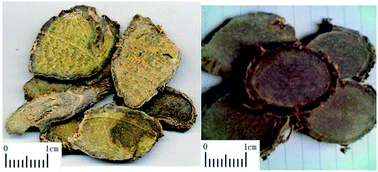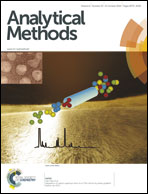Comparative analysis of trace elements contained in Rhizoma Curcumae from different origins and their vinegar products by ICP-MS
Abstract
A comparison of trace elements contained in Rhizoma Curcumae and their corresponding vinegar products, derived from three different origins, namely Curcuma phaeocaulis Val., Curcuma kwangsiensis S. G. Lee et C. F. Liang and Curcuma wenyujin Y. H. Chen et C. Ling, was undertaken using inductively coupled plasma mass spectrometry (ICP-MS). SPSS 19 was adopted for cluster and discriminant analyses. Rhizoma Curcumae is rich in Cu, Zn, Se, Cr, Co, V, Ni and other essential trace elements, and among them, Zn is present the most, followed by Ti, Cu, etc. After processing with vinegar, the contents of some essential trace elements may more likely increase, while the contents of some heavy metal elements tend to decrease. Rhizoma Curcumae from the same species and origin can be well clustered into one group. The results of the cluster analysis confirm the correlation between genuineness and the material base of Rhizoma Curcumae. In addition, the discriminant function of Rhizoma Curcumae was obtained, with an accuracy of 90.5%. Thus, a new concept was provided that Rhizoma Curcumae, even the other TCMs, from different sources may be identified by the discriminant function. One of the basic mechanisms of the processing technique of TCMs, “effect-enhancing and toxicity-reducing,” may be associated with the increase or decrease of some trace elements, which provides a new conception for the quality control of TCMs and the processed products.


 Please wait while we load your content...
Please wait while we load your content...